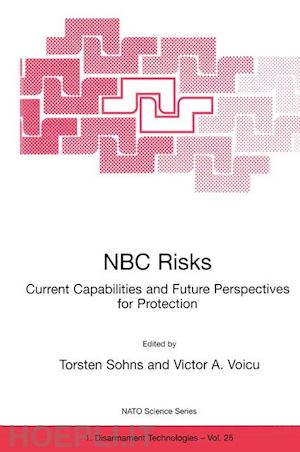I Nuclear, Biological and Chemical Risks — General Approach.- 1. The Proliferation of Weapons of Mass Destruction: Health Risks — An Analysis from a Medical Perspective.- 2. Intervention in a Chemical, Biological or Nuclear Disaster. A Romanian Point of View.- 3. Are the Civilians prepared for Chemical and/or Biological Warfare? The Need of a Cooperative Effort for a simple Guideline.- 4. Defense against Biological Terrorism — Scope and Limits.- 5. NBC Medical Planning System (NBCMedPlanS) — An Expert System.- 6. Planning of Medical Support for a Threatened or Actual Biological Environment. Principles, Policies and Procedures.- II Pharmacoprotection and Treatment.- 7. Finite Interactions Theory — A Biophysical Approach to Xenobiotic — Membrane Interface Interactions.- 8. A Theoretical Study of the Interactions of Acetylcholinesterase, Irreversible Inhibitors, and their Antidotes.- 9. Electrochemical Properties of Platelets: Clinical and Pharmacological Applications.- 10. Features of Apoptotic Cell Death in SCL II Cells after Exposure to 2,2-Dichlorodiethylsulfide.- 11. A NewView on the Mechanism of Action of Reversible Cholinesterase Inhibitors as Drugs for Prophylaxis.- 12. Cholinesterases as Bioscavengers for Protection against Organophosphate Chemical Warfare Agents.- 13. Selectivity and Protective Activity of Muscarinic Receptor’s Antagonists in Organophosphates Poisoning.- 14. Reactivators, from Classic to a New Generation.- 15. Convulsions in Organophosphate Intoxications: Their Mechanism and Treatment.- 16. Treatment of Organophosphate Nerve Agents, Current Therapy and Future Prospectives.- 17. Reactivation of Organophosphorus — Inhibited Human Erythrocyte-Acetylcholinesterase by Oximes in vitro.- 18. Cholinesterase Status in OrganophosphatePoisoned Patients.- 19. Testing the Antidotal Efficiency in the Treatment of Aflatoxin Poisoning.- 20. Zeolites as (Potential) Decorporating Agents.- III Skin Protection and Decontamination.- 21. New Concepts of Prophylaxis and Decontamination of Chemical Warfare Agents.- 22. Sorption-Mechanical Principle in Skin Decontamination.- 23. Reduction of the Skin Permeation of Xenobiotics Using Chemical Penetration Retarders.- 24. Effects of Protective Clothing on the Skin Penetration of Xenobiotics.- 25. Powders, Ointments and Solutions as First Aid, Nonspecific Antidotes for Organophosphorous Compounds at Skin Level.- 26. Protective Properties of Standard Combat Clothing against Skin Penetration of Supertoxic Lethal Chemical Warfare Agents.- IV Pharmaceutical Aspects of Protectants.- 27. Studies Concerning some Effects of Drugs, Colloid Vectors for Drugs and Decorporators on Blood Global Physico-Chemical Parameters.- 28. Transdermal Systems with Poly-2-Hydroxyethylmeth-Acrylates and new Biological Models for their Study.- 29. New Pharmaceutical Forms for Skin Protection.- 30. New Systems of Polyacrylate Copolymers for Controlled Delivery of Drugs.- 31. Researches on the Embedding of Decorporators in Microemulsions.- 32. Controlled Release Microspheres Prepared by using an Emulsion Solvent-Diffusion Technique as a Tool in Design of new Antidotes.- 33. Micro and Nanoparticles as Drug Carriers.- 34. A Structure — Property Relationship and Quantitative Approach to the Development of Universal Transdermal Drug Delivery System.- 35. The Dependence between Physico-Chemical and Allergenic Properties of Xenobiotics.- 36. Some Physical Chemical Aspects of Albumin-Alkali Halide Interaction.- V Environment Aspects of NBC Disarmament.- 37. Considerations in Investigations of MilitaryInstallation Decommissioning: Determining how Clean is Clean.- 38. The Comparative Danger of Chemical Weapons and Organophosphorous Pesticides for Aquatic Ecosystem Health.- 39. Direct Methods in the Evaluation of the Internal Contamination with Radionuclides.- 40. Retrospective Detection of Exposure to Organophosphates: Analyses in Blood of Human Beings and Rhesus Monkeys.- 41. Radiochemical Analysis of Environmental Samples in the Era of Disarmament.- List of Participants.











